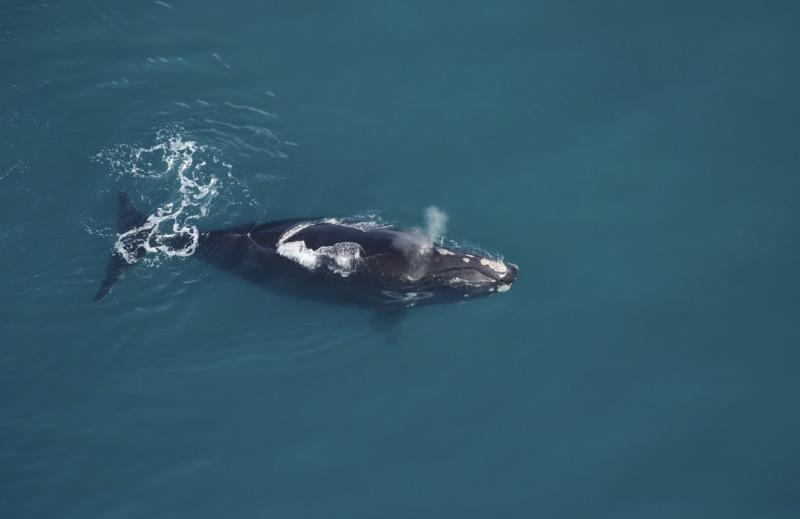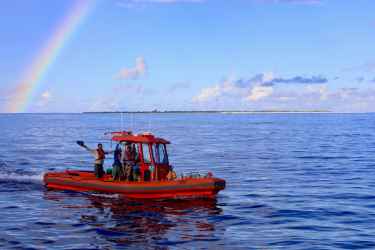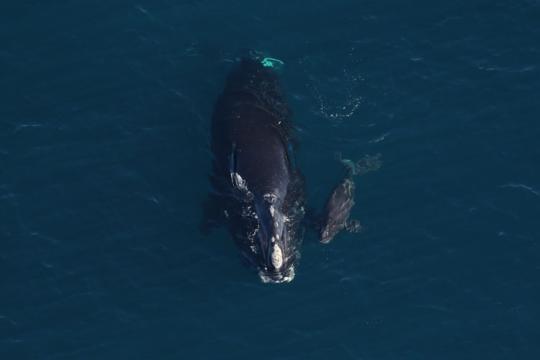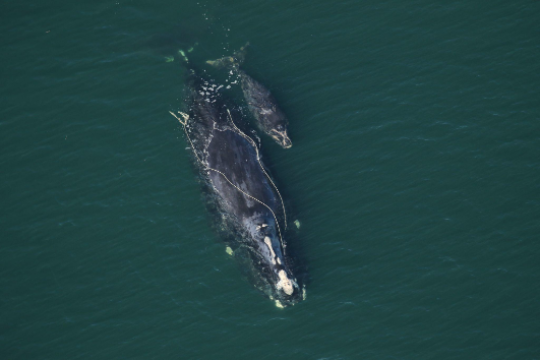The International Union for Conservation of Nature recently changed its Red List Category for North Atlantic right whales from endangered to critically endangered. The criteria used to evaluate this change are outlined in the IUCN Red List Categories and Criteria, Section V.
Within the United States, North Atlantic right whales are already in the highest risk category possible under both the Marine Mammal Protection Act (Strategic and Depleted) and Endangered Species Act (Endangered).
In 2019, NOAA Fisheries also added North Atlantic right whales to our Species in the Spotlight initiative, which focuses resources on the most imperiled endangered species under NOAA Fisheries’ jurisdiction. While IUCN Red List categories have no direct relationship to categorizations under the MMPA or ESA, NOAA Fisheries shares the IUCN’s concern for North Atlantic right whales. We continue to use our authority under the MMPA and ESA to protect and recover the species.
Status of North Atlantic Right Whales
North Atlantic right whales are an endangered species, with only about 400 individuals remaining in the population, of which there are likely fewer than 100 breeding females. Research published in 2017 made it clear that after two decades of slow recovery, the population began declining in 2010. This decline was exacerbated by 17 right whale mortalities in Canadian and U.S. waters in 2017. This prompted NOAA Fisheries to declare an unusual mortality event for North Atlantic right whales.
The leading cause of death based on the UME investigation is “human interaction”— specifically, entanglements in fishing gear or vessel strikes. The UME is ongoing. It includes 41 right whales: 31 dead whales plus an additional 10 seriously injured whales last seen alive with severe entanglements or vessel strike injuries.
Management and Conservation Actions by NOAA Fisheries
NOAA Fisheries has taken several management and conservation actions to address the threats to North Atlantic right whales. We formed a recovery team of scientists and stakeholders to help develop a North Atlantic right whale recovery plan in 2005. The plan guides our efforts to reduce vessel strikes and fishing gear entanglement, protect whale habitat, maximize efforts to free entangled right whales, and monitor the population. Recovery Plan Implementation Teams have also convened in the Northeast and Southeast United States to assist with the implementation of the recovery plan. We designated protected critical habitat for the North Atlantic right whale in a foraging area in the Northeast and a calving area in the Southeast. To reduce vessel strikes, we require large vessels to slow down in Seasonal Management Areas. We ask all vessels to slow down when whales are seen outside these areas and modified international shipping lanes. We developed right whale sighting and alert systems, and regulate how close a vessel can approach right whales.
We have also taken several steps to reduce entanglements in fishing gear with the help of the Atlantic Large Whale Take Reduction Team. The team is an advisory group of fishermen, scientists, environmental organizations, and state and federal officials. Under the resulting Take Reduction Plan, commercial fishermen have modified fishing gear to reduce the amount of line in the water column. They are required to modify fishing gear to make it less harmful to right whales and are required to fish outside of seasonally closed areas when whales are likely to be present. NOAA Fisheries is drafting regulations now to implement their most recent recommendations. They would reduce risk of incidental mortality and serious injury in lobster and crab trap/pot gear in the Northeast United States by 60 percent. Additionally, the agency is working closely with fishermen to develop methods to fish for lobster without using buoy lines to reduce the likelihood of entanglements in that fishery.
We authorize and support volunteer networks in states along the U.S. East Coast to respond to entangled right whales, and safely free them from the entangling gear whenever possible. We monitor the right whale population throughout U.S. waters using aerial surveys, vessel-based surveys and passive acoustic monitoring. Our aerial survey team also works with Canada to provide support monitoring for right whales in Canadian waters. Finally, we actively collaborate with Canada through ongoing bilateral negotiations on science and management gaps impeding the recovery of North Atlantic right whales in both Canadian and U.S. waters.






